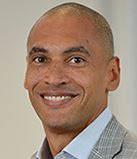But just a few years later the balance sheet did not reflect the expected 1+1=3 equation – in fact; it is carrying about US$2 billion in debt. So, Intel spun off 51% to private investment buy-out firm TPG for US$1.1 billion valuing the business at just over US$2 billion. Intel remains a 49% investor. Logic dictates that the new company will have an IPO once it has focused its efforts as a pure-play security supplier.
 McAfee will be led by Chief Executive Officer Chris Young, formerly a senior vice president at Intel and general manager of its security unit. I spoke to Young on his visit to Sydney.
McAfee will be led by Chief Executive Officer Chris Young, formerly a senior vice president at Intel and general manager of its security unit. I spoke to Young on his visit to Sydney.
“We want your permission to be more. Give us the permission to be a new McAfee free from any preconceptions and baggage,” he said.
|
|
Many companies go through merger and acquisition (M&A) to gain technology, staff and new customers, then to initial public offerings/listings to gain capital for growth. On the flip side, many end up demerging and privatising. One thing is for sure – business must be flexible and what was right at one time may not always be so.
The facts, according to many industry analysts, and alluded to by Young, was that Intel struggled to both understand and grow the business. Intel is a US$55+ billion company with 95,000 employees focusing on “hardware” components, data centre, and IoT. McAfee is around 4% of that – US$2 billion and 5000 employees.
Young will not speak of the reasons behind the spin-off – save to say that the original premise of the merger was sound, but market conditions have changed. He added that Intel still holds 49%. TPG is leading global investment firm and is well known for making astute investments, especially “carve-outs” like this from tier-one companies.
Young says the demerger it is all about focus and scale. As a pure-play security company, it will have the agility and scale to take its place as the leader in the security space. “We will be number one,” he says earnestly.
Young said that it was business as usual. “Our customers want the reassurance that our strategy has not changed. It hasn’t. Our partners need to know our commitment will not falter. It won’t. Our employees want to know they are part of a company positioned to thrive. You are.”
I asked about the McAfee brand – after all, the founder is a well-known “larrikin”. Young said that John McAfee was so far in the past that the only thing he and the company had in common was the same last name. In arriving at the decision to keep McAfee branding, he said that McAfee is very recognisable brand in the consumer space but that comprises less than 50% of its business. Enterprise and government are the major proportion of its revenue.
It wants government and enterprise to stop looking at a broad basket of solutions (best of breed from disparate suppliers) and focus on a majority McAfee solution using its McAfee Security Innovation Alliance partners
We spoke briefly about the raft of new products announced at its Focus Conference in the US last week. iTWire colleague Stephen Withers attended and covered the new brand and new products.
Young summarised.
McAfee is looking at security as an “outcome”, and that goes hand in hand with security as a service. Customers should be able to say what level of risk and cost they want, and McAfee should be flexible enough – with its partners – to provide that outcome.
McAfee will give preference to customers that select a broader basket of security solutions from McAfee and its partners – of course where it has the tech. Its ePolicy Orchestrator is a major key to seamlessly providing security.
To all our partners it is business as usual but the more you invest in us (training, specialists, focus) the more we will invest in you. The current partner agreement won’t change a lot – but it is always open to refinement.
McAfee has begun the shift to a consumption (subscription) model and managed service providers will play an increasingly important role. Flexibility in consumption models is key.
McAfee needs to forge ahead free of any preconceptions – it will be number one in the security space.
If you want to read more, Young’s letter to stakeholders rounds the story out.














































